How To Make The Camera Follow The Mouse In Unity
In this tutorial, nosotros are going to learn how we tin make the photographic camera follow an object in Unity3D using ii different methods. The offset one is by writing a script that updates the position of the camera according to position of the object. The 2nd one is using Cinemachine component of Unity3D.
A Little Bit Vector Algebra
Earlier we offset writing our CameraFollow script, start we need to review our knowledge virtually vectors a picayune chip. If y'all are already familiar with vector algebra, y'all may skip this function. As you probably know, we stand for positions of objects in Unity3D using vectors. In second infinite, we need 2 numbers to represent a position. Likewise, for 3D space, we need 3 numbers. To make it uncomplicated, for now, we are going to written report in 2D space first, then movement our discussion to 3D space.
As nosotros mentioned above, in 2nd space nosotros need two numbers to stand for a position. For case, A=(2,3) represents a signal on second space such that 2 units on the ten-centrality, and iii units on the y-axis. In the same style, B=(2,-i) represents another vector.
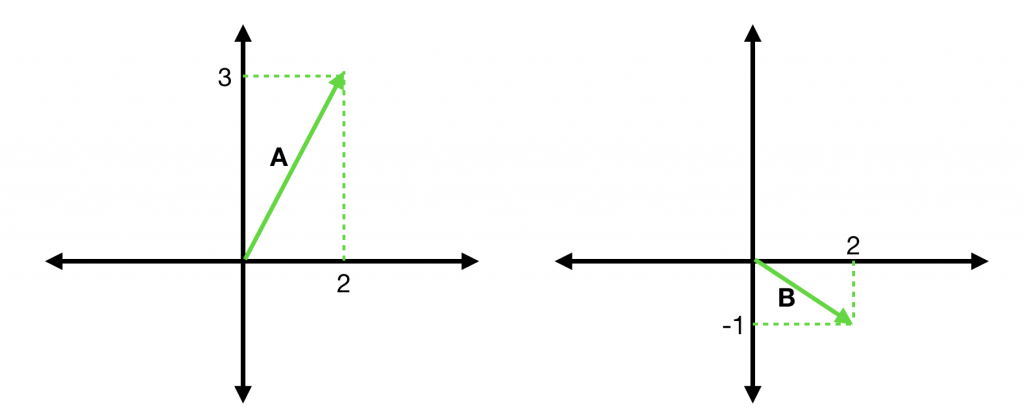
Vectors are cool mathematical objects that you lot can perform several mathematical operations like summation, subtraction, different kind of multiplications, etc. If you would similar to deep dive into game development, you should definitely be comfortable if you are non familiar with them. Only for this tutorial, we are only going to cover basic operations.
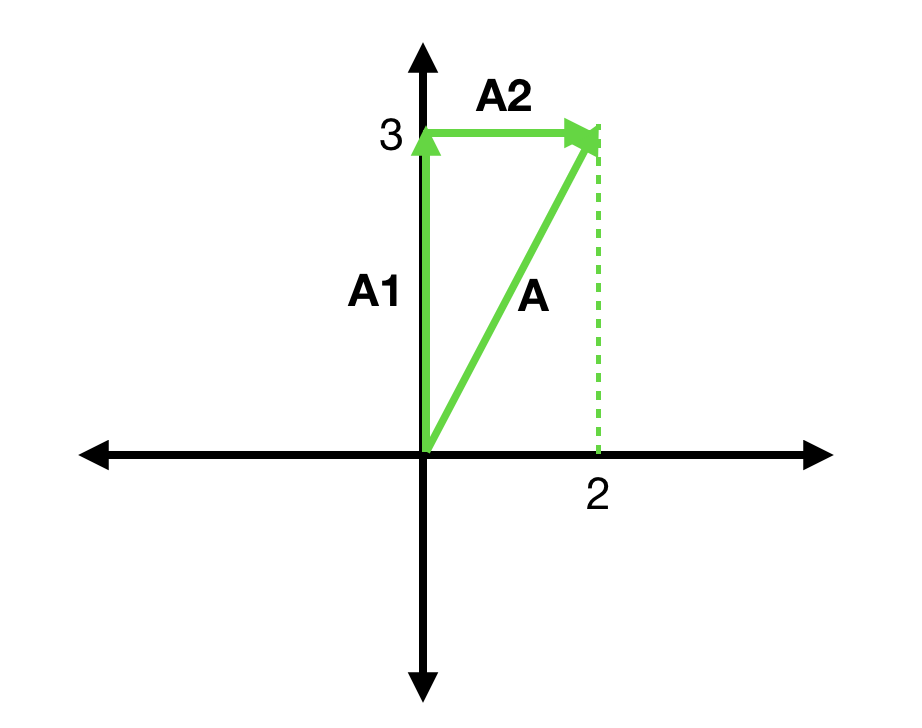
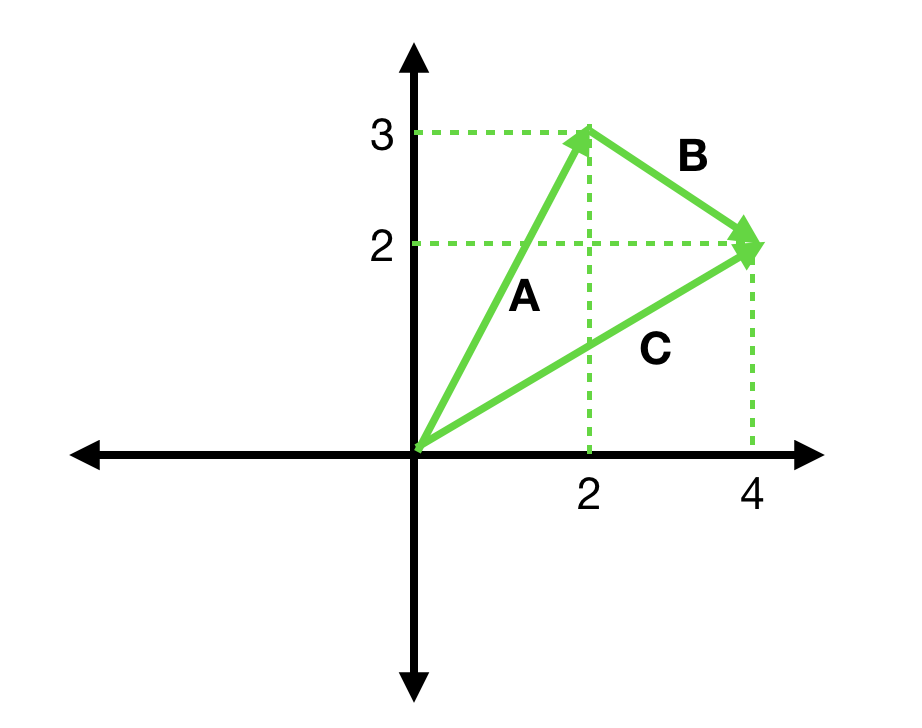
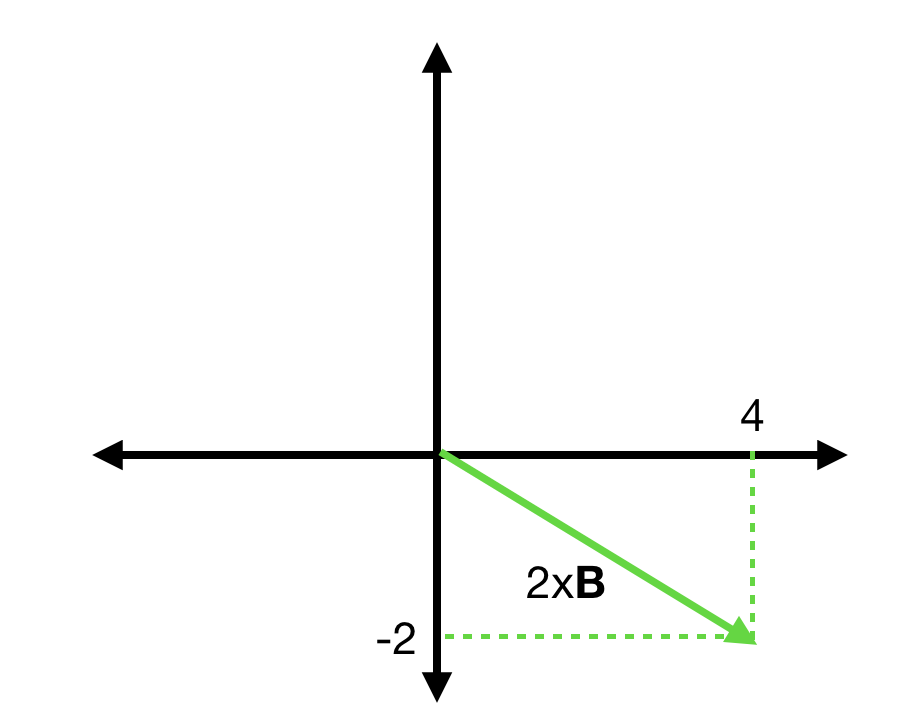
Assume that you are at the center of the coordinate space. This signal is called equally the origin. And the coordinates of the origin are (0,0) in 2d space. Now assume that you are walking on the vertical axis to the up direction( i.due east y-axis) by 3 units and then in the right direction by 2 units. Your final position volition exist the point (ii,iii). Alternatively, y'all can walk along the A. The last position will be the same. Allow's say A1=(0,3) and A2=(2,0). As you may detect we can represent vector A every bit the summation of two vectors, A1+A2. When we want to sum two vectors, we sum the outset components and obtain the outset component of the last vector. As well, we take to add the second component of ii vectors to obtain the second component of the final vector.
Similarly, we can add together whatsoever two vectors to obtain a third vector. For example, if we add together vector B to vector A, we get C which represents some other position in the 2D infinite.
In addition to summation, nosotros can multiply vectors by numbers (furthermore, you lot tin can multiply a vector with another vector merely this is out of our interest, hither). For instance, we tin multiply vector B by 2. In this example, we will become a vector that is represented as (four,-two). Furthermore, you can multiply a vector with a negative number. For example, if yous multiply B with -i, then y'all volition get (-2,1).
All of our discussion hither tin be generalized to higher dimensions. All the mathematics is the same for 3D space also.
Up to now, we made a review of the basics of vector algebra and nosotros are going to use these operations while we are writing a camera follow script.
Post-obit an Object using CameraFollow Script
Get-go, we volition commencement with a basic script and then we will make it better. Allow's start.
Assume that nosotros have an object at some position in our scene. Let'south say the position vector that represents its position is O. And we have a camera that is located at some betoken in the scene that is represented past a position vector C.
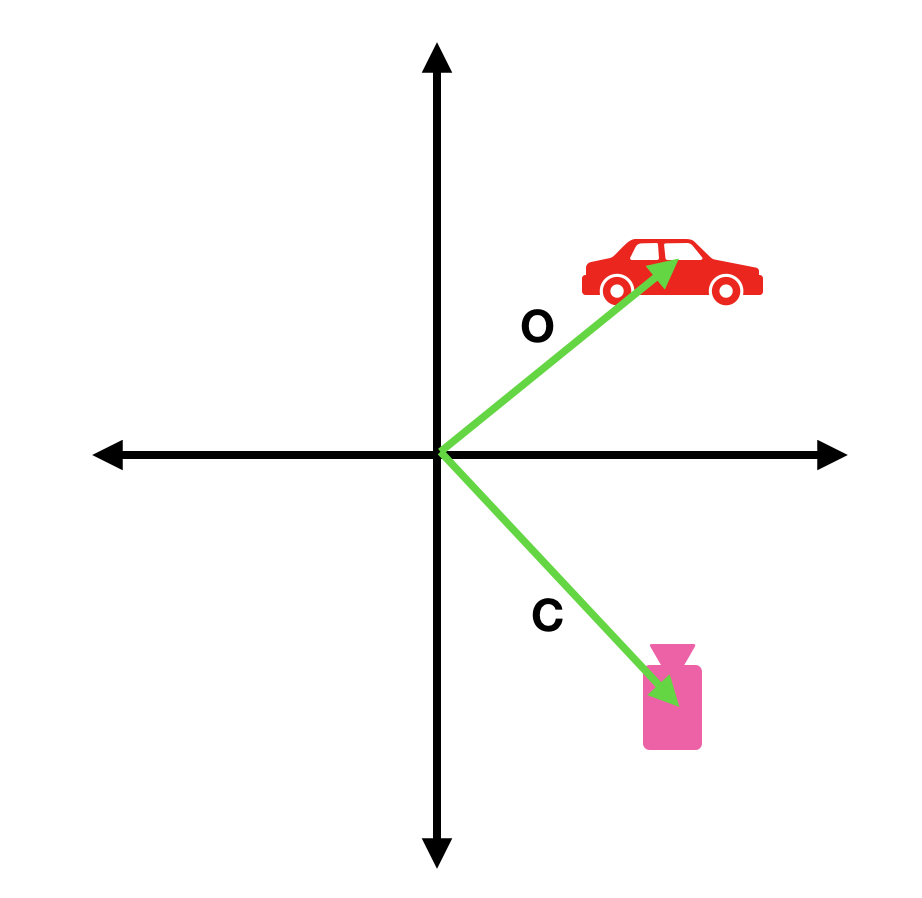
Our aim is to update the position of the camera according to the object's position. Therefore, we accept to determine the position of the photographic camera according to the object'south position. To do this, we need the position vector from the object to the camera. We tin obtain this relative position vector past subtracting O from C:
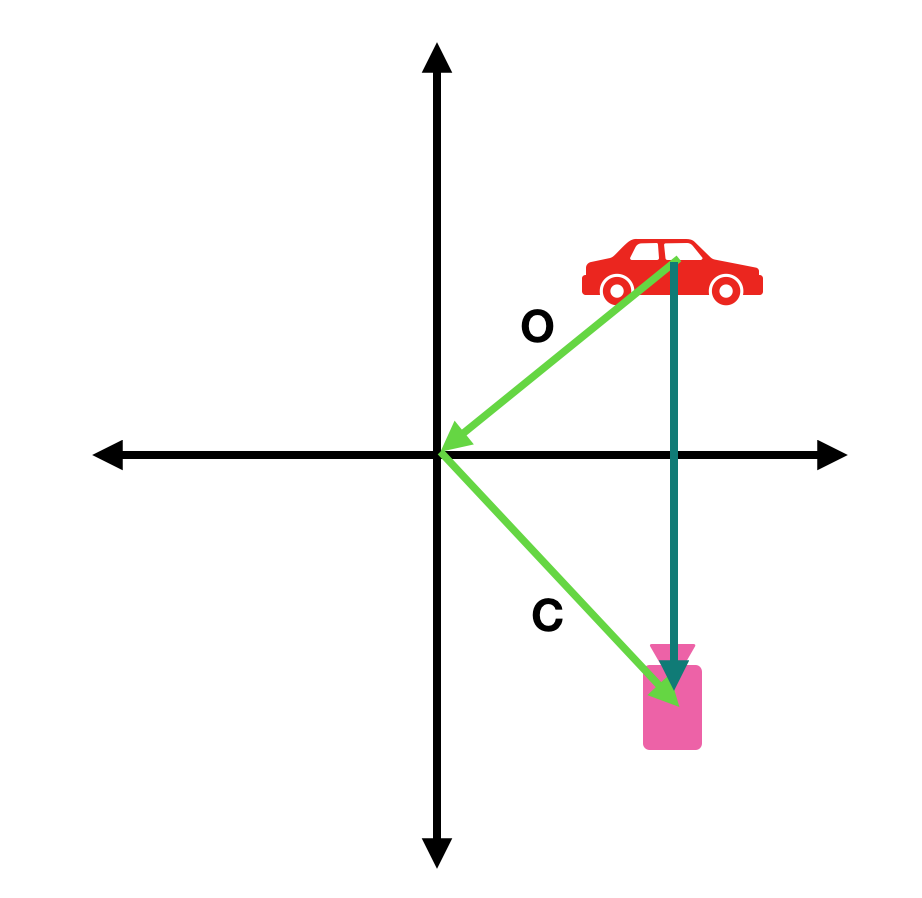
Therefore, we can make up one's mind the new position of the camera by adding this relative direction vector to the object'due south instantaneous position.
Create a new script and change its name to CameraFollow. Assign this script to your main photographic camera.
using Organisation.Collections; using System.Collections.Generic; using UnityEngine; public class CameraFollow : MonoBehaviour { public Transform targetObject; individual Vector3 initalOffset; private Vector3 cameraPosition; void Commencement( ) { initalOffset = transform.position - targetObject.position; } void FixedUpdate( ) { cameraPosition = targetObject.position + initalOffset; transform.position = cameraPosition; } }
As mentioned in a higher place, we get the relative position vector by subtracting the target object's initial position from the photographic camera's initial position. Nosotros add this offset vector to the object'south position vector to find the new position vector of the camera. Exercise not forget to assign the target object into your script from the inspector.
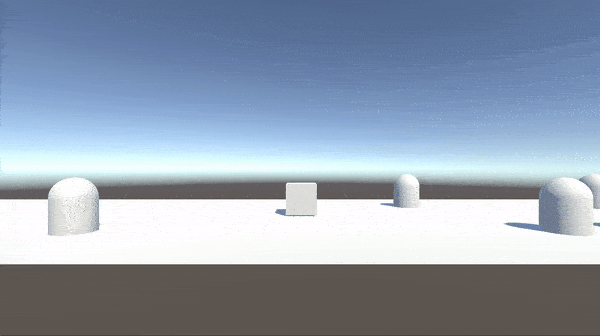
Nosotros can make it smoother if we use the Vector3.Lerp method. Lerp method is used for linear interpolation. If nosotros update the position of the camera with a filibuster, nosotros will obtain a shine movement. If you lot add together a smoothness variable, yous can command the delay.
public form CameraFollow : MonoBehaviour { public float smoothness; public Transform targetObject; individual Vector3 initalOffset; private Vector3 cameraPosition; void Beginning( ) { initalOffset = transform.position - targetObject.position; } void FixedUpdate( ) { cameraPosition = targetObject.position + initalOffset; transform.position = Vector3.Lerp(transform.position, cameraPosition, smoothness*Fourth dimension.fixedDeltaTime) ; } }
Let me explicate linear interpolation for those who are not familiar with. Linear interpolation is a method that returns a value between two values. In the Vector3.Lerp method, we used three arguments. The first and second ones are position vectors and the third one is the interpolation value. Assume that the first vector is a nil vector and the 2nd vector is (one,0,0). If the third value is 0.5 then Vector3.Lerp method will render a vector (0.5, 0, 0). Likewise, in our CameraFollow script, we used smoothness*Time.fixedDeltaTime. Therefore, in each FixedUpdate() method call, the position vector is updated a modest amount. This will create a smooth movement.
And this is the outcome:
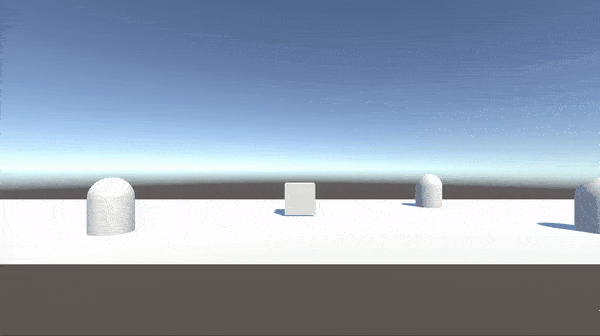
Let's take our script a pace farther. Now, we would similar to specify a few coordinates relative to the target object and switch the position of the camera to these specified coordinates.
To do this, nosotros can declare an enum and therefore when we want to switch the relative position, nosotros can specify one of the selections.
public class CameraFollow : MonoBehaviour { public float smoothness; public Transform targetObject; private Vector3 initalOffset; private Vector3 cameraPosition; public enum RelativePosition { InitalPosition, Position1, Position2 } public RelativePosition relativePosition; public Vector3 position1; public Vector3 position2; void Start( ) { relativePosition = RelativePosition.InitalPosition; initalOffset = transform.position - targetObject.position; } void FixedUpdate( ) { cameraPosition = targetObject.position + CameraOffset(relativePosition) ; transform.position = Vector3.Lerp(transform.position, cameraPosition, smoothness*Time.fixedDeltaTime) ; transform.LookAt(targetObject) ; } Vector3 CameraOffset(RelativePosition ralativePos) { Vector3 currentOffset; switch (ralativePos) { example RelativePosition.Position1: currentOffset = position1; interruption ; case RelativePosition.Position2: currentOffset = position2; break ; default : currentOffset = initalOffset; break ; } return currentOffset; } }
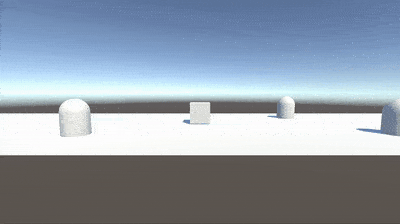
Following an Object Using Cinemachine
In the 2nd role of this tutorial, nosotros are going to encounter how we can follow an object using the cinemachine component. First, we demand to download and import the cinemachine from the nugget store. If yous have problems with importing cinemachine, you may need to restart Unity.

Add the Cinemachine Brain component to your main camera. Cinemachine Brain is the control betoken for the virtual cameras that we volition create.
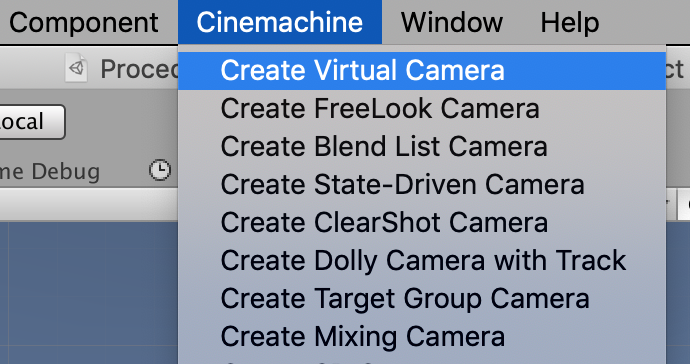
Now we can create several virtual cameras, control the behaviors of them and switching betwixt them. But for this tutorial, nosotros will create only i virtual photographic camera to show how we can make the camera follow an object.
Create a virtual camera from the Cinemachine carte.
Click on the newly created virtual camera. Accommodate your photographic camera position, rotation or other settings as if information technology is your primary camera. So assign your target object to the Follow slot. If you would similar to rotate your camera according to your object, y'all can assign information technology to Look At slot, as well.
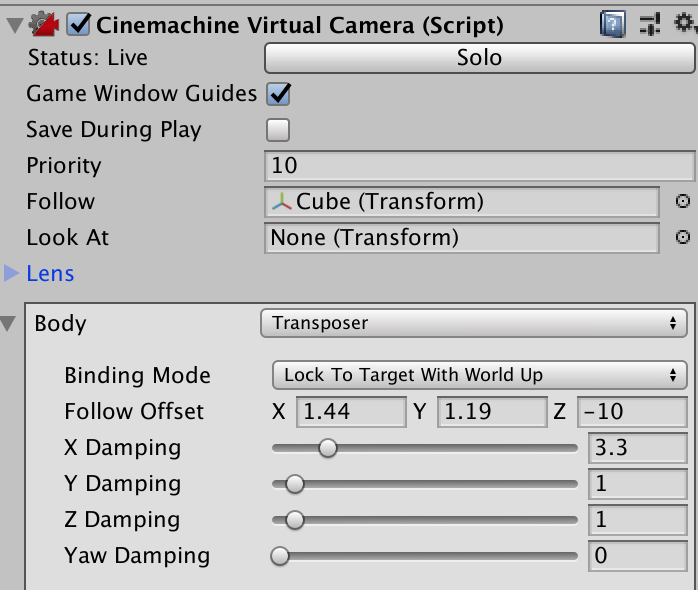
Y'all tin fine-melody the filibuster of the camera behind the movement of the object past changing damping values in each direction.
Source: https://www.codinblack.com/how-to-make-the-camera-follow-an-object-in-unity3d/
Posted by: harrisonourch1959.blogspot.com

0 Response to "How To Make The Camera Follow The Mouse In Unity"
Post a Comment